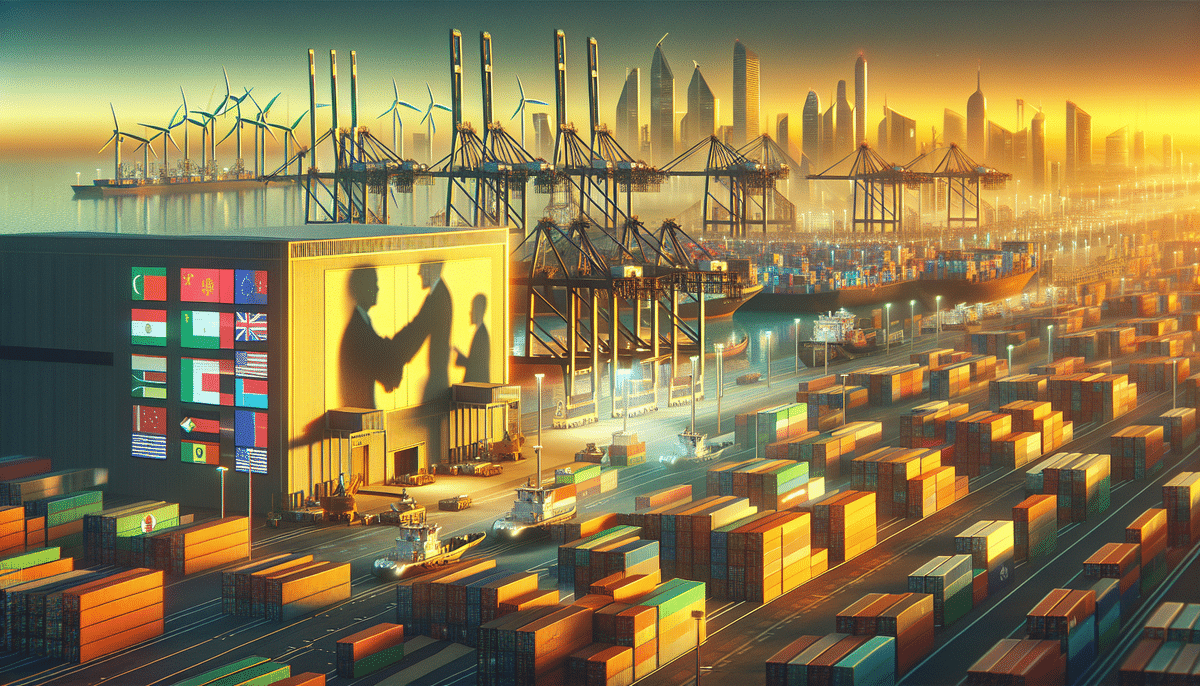The Impact of the Global Economy on International Shipping
International shipping is a cornerstone of the global economy, underpinning the movement of goods and services across borders. Economic stability and growth heavily influence the shipping industry, which must navigate changing consumer demands, political instability, and other global events. This article delves into the various ways the global economy affects international shipping and explores strategies that businesses in the industry can adopt to remain competitive.
Economic Factors Influencing International Shipping
Economic Growth and Recession
The global economy experiences cycles of growth and recession, each having distinct impacts on the shipping industry. Economic growth typically signals increased demand for goods and services, leading to higher shipping volumes. For instance, during periods of economic expansion, shipping companies often see a surge in cargo transportation as consumer spending rises.
Conversely, economic recessions can dampen demand for shipping services as businesses and consumers reduce spending. To mitigate the effects of economic fluctuations, shipping companies must remain flexible, diversifying their offerings, exploring new markets, and investing in technologies that enhance efficiency and reduce costs. According to the International Monetary Fund, global trade volumes are closely tied to economic indicators, highlighting the need for adaptability in the shipping sector.
Tariffs and Trade Wars
The rise in tariffs and trade wars has introduced significant challenges for the shipping industry. Trade disputes between major economies can lead to the imposition of tariffs and counter-tariffs, disrupting established trade routes and altering the flow of goods. For example, the trade tensions between the United States and China have forced shipping companies to seek alternative routes and markets to maintain profitability.
Increased tariffs raise the cost of importing and exporting goods, which can reduce demand for shipping services. Additionally, the uncertainty surrounding trade policies makes long-term planning difficult for shipping companies, as sudden regulatory changes can impact operational stability. To navigate these challenges, businesses must stay informed about geopolitical developments and be prepared to adjust their strategies accordingly.
Trade Agreements and Political Stability
Role of Trade Agreements
Trade agreements between nations play a crucial role in shaping the international shipping landscape. These agreements determine which products can be traded, the tariffs and taxes applied, and the overall ease of conducting business across borders. Understanding the nuances of these agreements is essential for shipping companies to optimize their operations and remain competitive.
Changes to trade agreements can create both challenges and opportunities. For instance, the renegotiation of trade terms may open up new markets or necessitate the exploration of alternative shipping routes to mitigate increased tariffs. According to the World Trade Organization, effective trade policies can enhance global trade efficiency, benefiting the shipping industry by streamlining operations and reducing costs.
Navigating Political Instability
Political instability, including conflicts, trade disputes, and changes in government, can disrupt shipping routes and operations. Companies operating in volatile regions must be adept at assessing political risks and developing contingency plans to maintain their shipping activities.
For example, the ongoing tensions in the South China Sea have led to the rerouting of maritime traffic to avoid conflict zones, impacting shipping times and costs. Shipping companies must continuously monitor geopolitical developments and adapt their routes and strategies to ensure the safety and efficiency of their operations. Collaborating with local partners and leveraging geopolitical risk assessments can aid in navigating these uncertainties.
Technological Advancements and Innovations
Role of Technology in Shipping Efficiency
Technological advancements are revolutionizing the shipping industry, enhancing efficiency and sustainability. Innovations such as autonomous ships, real-time monitoring systems, and blockchain technology are enabling shipping companies to reduce operational costs, improve delivery times, and minimize environmental impact.
For instance, autonomous ships can operate with reduced crew sizes, lowering labor costs and increasing fuel efficiency. Real-time monitoring systems provide comprehensive data on vessel performance and cargo conditions, facilitating proactive maintenance and optimized routing. Additionally, blockchain technology offers a secure and transparent ledger for tracking transactions and movements within the supply chain, reducing paperwork and increasing trust among stakeholders.
Innovations in Logistics Management
Effective logistics management is critical for efficient international shipping. Innovations in this area include the use of data analytics and real-time tracking to enhance decision-making and streamline operations. By leveraging big data, shipping companies can analyze shipping patterns, predict demand fluctuations, and optimize their supply chains accordingly.
Moreover, advancements in automation and robotics are improving warehouse operations, enabling faster loading and unloading of goods. Implementing integrated logistics platforms can also facilitate better coordination between different segments of the supply chain, ensuring timely and cost-effective delivery of goods. According to a report by McKinsey & Company, digital transformation in logistics is a key driver of efficiency and competitiveness in the shipping industry.
Sustainability and Environmental Concerns
Adapting to Consumer Demand
Increasing consumer awareness of sustainability is reshaping the shipping industry. Companies are under pressure to adopt eco-friendly practices to reduce their carbon footprint and meet consumer expectations. This includes transitioning to greener technologies, optimizing fuel usage, and implementing sustainable logistics solutions.
Investing in alternative fuels such as LNG, biofuels, and hydrogen is becoming more prevalent as shipping companies strive to minimize emissions. Additionally, enhancing vessel design for better fuel efficiency and adopting energy-saving measures in port operations are essential steps toward sustainability. The International Maritime Organization has set ambitious targets for reducing greenhouse gas emissions, pushing the industry to innovate and adopt sustainable practices.
Addressing Environmental Concerns
The shipping industry is increasingly focused on addressing environmental concerns to ensure long-term sustainability. Efforts include reducing emissions, managing waste, and protecting marine ecosystems. Implementing stricter environmental regulations and adhering to international standards are crucial for minimizing the environmental impact of shipping operations.
Technologies such as scrubbers to clean exhaust emissions, ballast water treatment systems to prevent ecological disruptions, and energy-efficient hull designs are being adopted to meet environmental standards. Furthermore, companies are exploring the use of renewable energy sources to power ships and ports, contributing to a more sustainable shipping ecosystem.
Strategic Partnerships and Future Trends
The Importance of Strategic Partnerships
Strategic partnerships are vital for navigating the complexities of the global shipping industry. Collaborations with local logistics providers, global shipping conglomerates, and technology firms enable companies to enhance their capabilities, access new markets, and share resources effectively.
By forming alliances, shipping companies can pool resources to invest in large-scale projects, such as shared container ships or joint logistics operations, reducing costs and increasing efficiency. Partnerships also facilitate knowledge sharing and innovation, allowing companies to develop comprehensive solutions that address common industry challenges. According to Brookings Institution, strategic collaborations are key to driving growth and resilience in the shipping sector.
The Future of International Shipping: Trends and Predictions
The future of international shipping is being shaped by several emerging trends, including a focus on sustainability, the integration of advanced technologies, and the evolution of global trade dynamics. Automation, artificial intelligence, and the Internet of Things (IoT) are set to further transform shipping operations, enhancing efficiency and responsiveness.
Additionally, the shift towards circular economies and sustainable supply chains will drive the adoption of eco-friendly practices and technologies. Geopolitical developments, such as shifts in trade alliances and the emergence of new trade agreements, will also influence shipping routes and strategies. Businesses that embrace these trends and invest in innovation will be well-positioned to thrive in the evolving global economy.
Conclusion
International shipping remains a dynamic and integral component of the global economy, influenced by a multitude of factors ranging from economic cycles and trade agreements to technological advancements and environmental concerns. To succeed in this complex and ever-changing landscape, shipping companies must stay informed, embrace innovation, and build strong strategic partnerships.
By adopting flexible strategies, investing in sustainable practices, and leveraging cutting-edge technologies, businesses in the shipping industry can navigate economic fluctuations and geopolitical uncertainties. The ability to adapt and innovate will be critical in ensuring long-term competitiveness and success in the global shipping market.




















